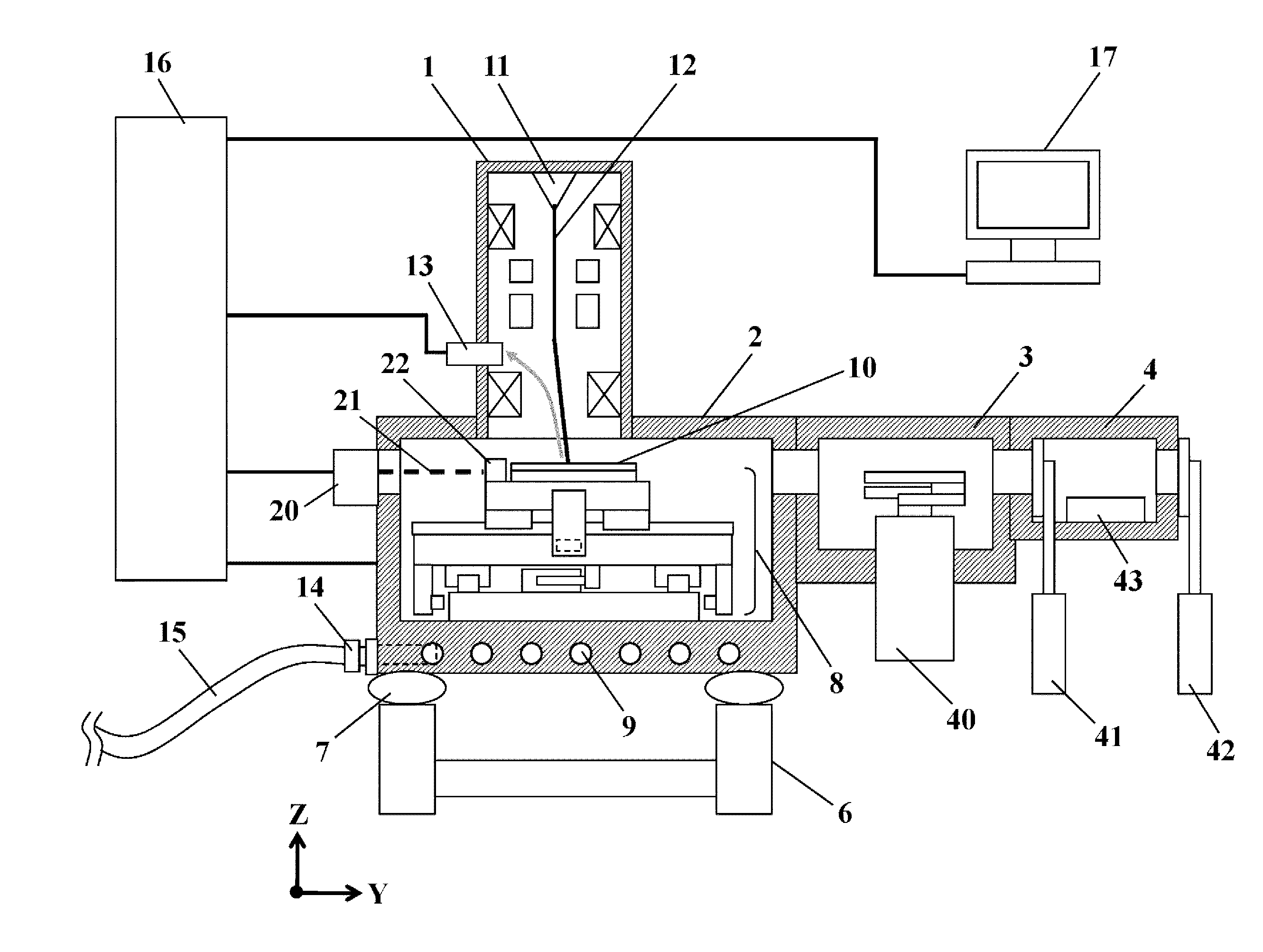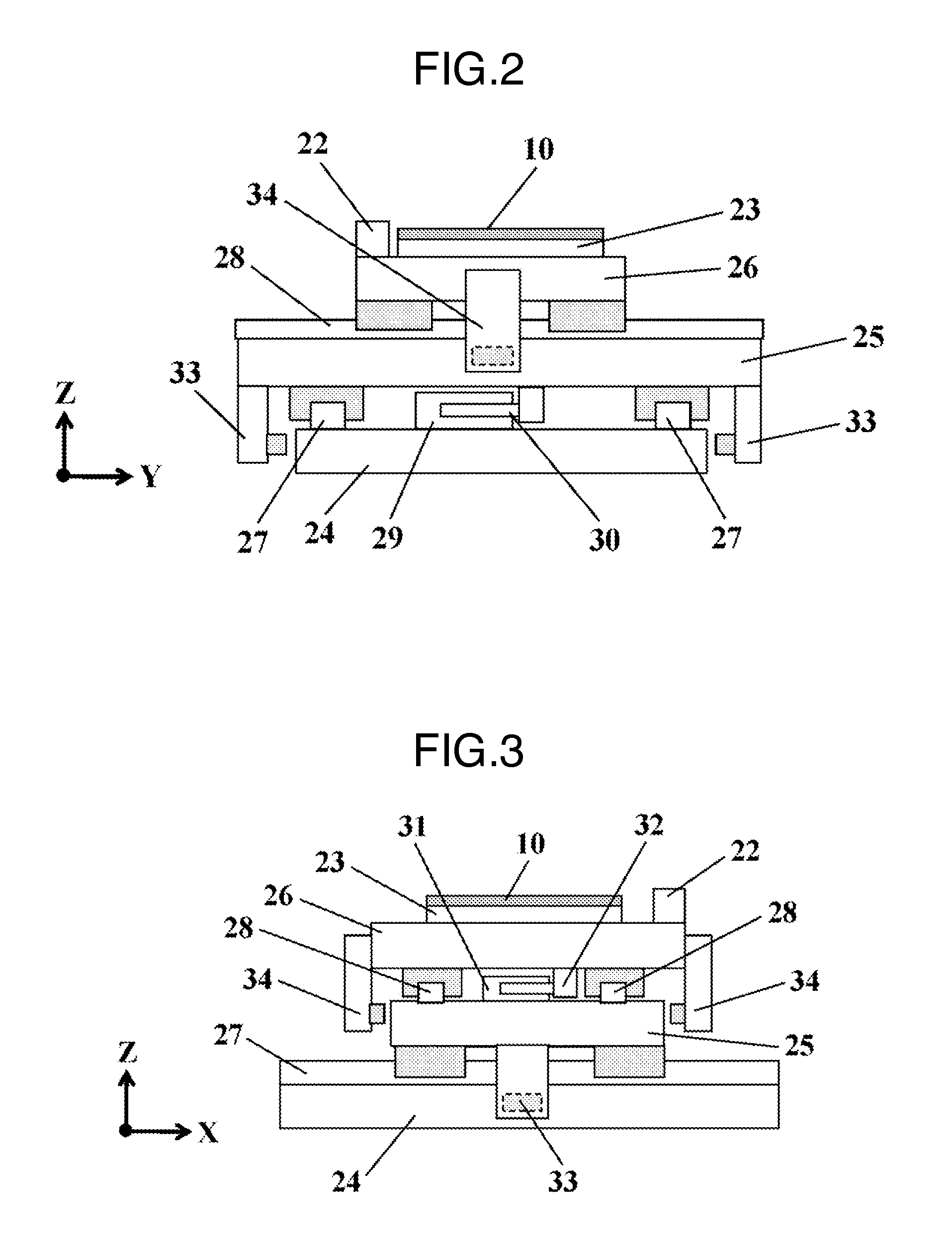Charged Particle Beam Apparatus, Stage Controlling Method, and Stage System
a particle beam and charge technology, applied in electrical apparatus, electric discharge tubes, nuclear engineering, etc., can solve the problems of insufficient increase, inability to adjust current amount, heat generation, etc., and achieve the effect of reducing temperature change and improving sample positioning accuracy
- Summary
- Abstract
- Description
- Claims
- Application Information
AI Technical Summary
Benefits of technology
Problems solved by technology
Method used
Image
Examples
first example
[0041]FIG. 1 schematically illustrates an entirety of an inspection apparatus of the example.
[0042]Mounts 7 for damping vibration of a floor are installed on a pedestal 6 provided on the floor and the mounts 7 support a sample chamber 2 that is a vacuum vessel. A column 1 that controls an electron beam 12 to be generated and to scan the sample is installed in an upper portion of the sample chamber 2. The column 1 includes a deflector that deflects the electron beam 12 so as to scan the sample or an objective lens that converges on the electron beam 12 on the sample in addition to an electron source 11 generating the electron beam 12. In addition, the column may include other various lens or apertures and a configuration of a charged particle optical system is not limited to the examples. In addition, the column 1 is provided with a detector 13 for detecting secondary charged particles such as secondary electrons or reflective electrons obtained by applying the electron beams to the ...
second example
[0088]Next, as a second example, a control method in which a temperature sensor is mounted on the stage and information thereof is fed back to the command value during the warming up operation will be described with reference to FIGS. 19 and 20. Hereinafter, a description regarding the same portions as the first example will be omitted.
[0089]In the first example, the operation rate of the stage is predicted and the current of the motor is set, but if the frequency of the inspection is greatly changed by time or if a recipe in which the operation rate of the stage is high and a recipe in which the operation rate of the stage is low are mixed in one inspection, it is difficult to accurately predict the heat amount of the motor. It is easy to maintain a constant temperature by mounting the temperature sensor on the motor and controlling the current amount based on the information of the temperature even if the operation rate of the stage is different.
[0090]In the example, a structure i...
third example
[0094]Next, a third example will be described with reference to FIGS. 23 and 24. In the example, an example is described in which the warming up operation described in the first and second examples is performed in each position by moving the stage by a predetermined distance for each predetermined time.
[0095]First, a structure of a linear motor is described. Typically, the linear motor is often configured of a coil of three phases (U phase, V phase, and W phase), and a plurality of same phases are used as each phase is one movable element. In FIG. 23, the movable element is indicated in which two coils of each phase are arranged. Linear motor movable elements (30 and 32) are configured of a total six coils consisting of U phase coils 35, V phase coils 36, and W phase coils 37. In the linear motor fixing element, a plurality of magnets are arranged such that adjacent magnets generate a magnetic field having different directions to each other.
[0096]FIG. 24 illustrates how the current ...
PUM
 Login to View More
Login to View More Abstract
Description
Claims
Application Information
 Login to View More
Login to View More - R&D
- Intellectual Property
- Life Sciences
- Materials
- Tech Scout
- Unparalleled Data Quality
- Higher Quality Content
- 60% Fewer Hallucinations
Browse by: Latest US Patents, China's latest patents, Technical Efficacy Thesaurus, Application Domain, Technology Topic, Popular Technical Reports.
© 2025 PatSnap. All rights reserved.Legal|Privacy policy|Modern Slavery Act Transparency Statement|Sitemap|About US| Contact US: help@patsnap.com



